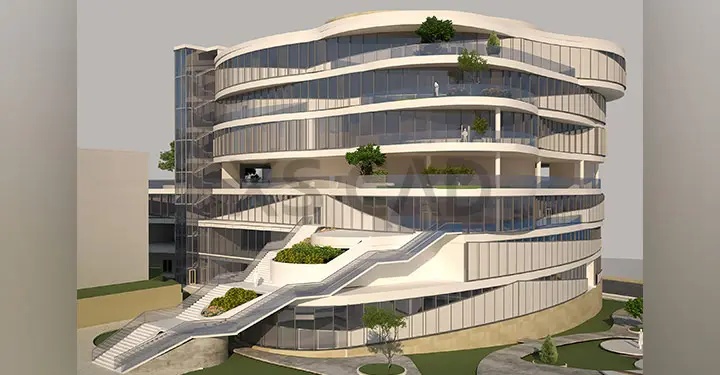Our Articles

How Point Cloud Data Helps Create Accurate 3D Models for Commercial Buildings
If a picture paints a thousand words, accurate 3D models offer a vast range of information and design details. When point cloud data is used to create 3D models for commercial buildings, this information will be precise and accurate. Further, incorporating point cloud data with Building Information Modelling (BIM) in the design process will prove considerably advantageous. However, this may need high-quality 3D BIM modelling services to ease the workflow.
Commercial buildings are generally described as buildings used for business operations and activities. Commercial buildings and property are generally classified into the following categories:
From small buildings to skyscrapers, commercial buildings dot the urban landscape. Retail buildings, with retail sales shops and restaurants, are governed by several local zoning regulations and state laws. Industrial buildings have manufacturing, repair, research and development outlets and warehouses and are located in specially designated zones falling under local ordinances and regulations, which means they need to have precise planning and communication of their design details.
Why BIM?
To help execute this precision, we look to the scan to BIM process. But first, why do we want to use BIM?
Scan to BIM & Design
How does scan to BIM help the design process?
What the scan to BIM process achieves is that it digitally captures a physical space as laser scan data, which enables the creation, development and maintenance of a BIM model. This happens when laser scan data, collected in the form of a point cloud, a set of data points in a 3D coordinate system, accurately and precisely represents the external or internal surface of a commercial building.

It can take a long time and meticulous planning to collect data on an existing commercial building, especially if any previous modifications to the building have not been properly recorded. Incomplete or unreliable information may have been used to create BIM models of existing buildings, and as-built documentation may be outdated, incomplete or both. Bringing together fragmented data to generate a BIM model may not be reliable. Collecting actual data to verify models may need a physical visit for measurements and photographs.
The scan-to-BIM process uses 3D laser scanning to digitally capture an existing building as a point cloud, for the creation and updating of a BIM model. The 3D laser scanners capture a high-density point cloud of a physical building, from which a BIM model is created that reflects actual conditions and details. These accurate 3D models can be used for as-built documentation, project renovations and additions or even facility management.
Point cloud data used in the scan-to-BIM process is applicable for commercial projects where data on an existing building needs to be recorded for renovation, refurbishment, conservation or for an extension to be built. It can also be used on new projects to generate a record of the existing adjacent buildings or when a building needs to be demolished. Further advantages of using point cloud data are:
Point cloud-generated 3D models provide architects and engineers certain key benefits, such as:
1. Speed
2. Precision and control
3. Visualisation
To know more about point cloud.
It is easier and less expensive to alter a project in the design stage rather than after projects commence. Creating 3D modelling that uses data collected from laser scanners can give design professionals the advantages they need to finish projects quickly, efficiently and within budget. If, due to time and resource constraints, they require reliable BIM modelling services, it is becoming increasingly popular to source these
3D modelling services from offshore partners.
XS CAD has valuable experience providing 3D modelling services and point cloud to BIM modelling services for general contractors and consultants. Our range of services for consultants and manufacturers across the world include point cloud to BIM and 3D BIM modelling services. We create these models and drawings by using Revit, AutoCAD and BIM 360 Design for cloud collaboration.

